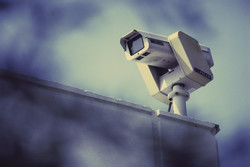Smart surveillance: Security and privacy can coexist
As cross-border crime and terrorism become global concerns, the EU is investigating different ways that could enhance safety and security, particularly through the use of smart, cutting-edge technology. With this in mind, the EU-funded SMART(opens in new window) (Scalable measures for automated recognition technologies) project investigated the growing use of automated surveillance solutions. Automatic systems included are massively integrated multi-sensor installations, as well as targeted and untargeted surveillance. Work began by mapping the current technological and legal situation for automated surveillance systems in key application areas for the following sectors: border control areas; counter-terrorism, law and order; consumer sector multi-purpose mobile devices; e-government; and cyberspace. Project partners reviewed laws and other regulations that oversee surveillance and laws that govern interoperability and data exchange between police or security services and the private sector. Through focus groups across Europe, the SMART team evaluated citizens' existing attitudes and beliefs towards smart surveillance and privacy. It also provided an overview of risks inherent in underlying telecommunications infrastructures and cyberspace. In addition, criteria for best practices were identified for optimal use of smart surveillance technologies. To address the risks and concerns identified during the project, researchers created a toolkit targeting all relevant stakeholders. It contains a Model Law that presents concrete safeguards for privacy and data protection to be employed in smart surveillance now and in the future. As a result, the model law renders the use of smart surveillance compliant with relevant EC legislation and other applicable regulations. SMART will help bring safety and security to Europe without compromising personal data, in an environment where smart surveillance can finally live up to its name.







